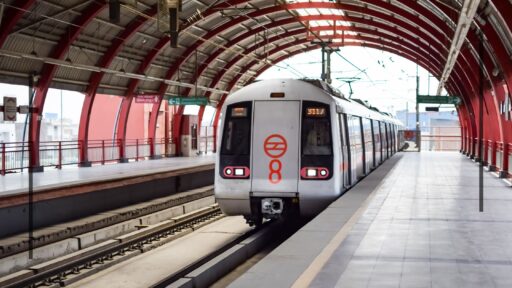Introduction:
Have you ever wondered how those sleek, modern metro rail systems are built with such precision and efficiency? The secret lies in cutting-edge technology known as Building Information Modelling (BIM). BIM technology is revolutionising the way we plan, design, and construct metro rail projects. By creating detailed digital representations, or BIM models, of every aspect of a project, from the tracks to the stations, BIM allows for a level of precision and coordination that was previously unimaginable.
Benefits of Implementing BIM in Metro Rail Projects:
Enhanced Planning and Design:
One of the primary benefits of BIM design is the ability to visualise projects in 3D before construction begins. This 3D visualisation helps planners and designers to create more accurate and efficient designs, reducing the likelihood of errors and changes during the construction phase. Imagine being able to walk through a virtual metro station before it’s built – that’s the power of BIM!
Coordination and Clash Detection:
One of the coolest features of BIM technology is Coordination and Clash detection. In large projects like metro rail, different teams work on various parts, which can sometimes conflict with each other. BIM experts use software to identify these clashes early on, preventing costly errors and budget overruns. This means pipes won’t run into walls, and cables won’t interfere with other systems – everything fits together perfectly.
Cost Savings and Financial Benefits of BIM:
Building Information modelling software helps save money by creating detailed 3D models that provide an accurate picture of the entire project. The benefits of BIM include better cost estimations, reducing waste, and making sure resources are used efficiently. This means fewer surprises during construction and a more predictable budget, which is a big win for everyone involved.
Data Integration and Collaboration:
In metro rail projects, different teams need to work together seamlessly. BIM collaboration ensures that everyone is on the same page through effective data sharing and communication protocols. This collaborative design process helps avoid misunderstandings and ensures that all parts of the project are integrated smoothly, making the construction process more efficient and cohesive.
BIM for Project Management and Execution:
A well-structured BIM execution plan is crucial for managing complex projects. BIM and project management go hand in hand, offering detailed insights into every aspect of the project. This includes precise BIM cost estimation and ensuring that the project management execution plan is followed correctly. With BIM, managing a metro rail project becomes more streamlined and less prone to errors.
Environmental and Sustainability Benefits:
Using BIM models in metro rail systems promotes sustainable solutions by optimising resource use and minimising waste. This means less material and energy are used, which is great for the environment. Plus, BIM is eco-friendly because it cuts down on the need for physical models and lots of paper, leading to less waste overall. By using BIM, metro rail projects can be more environmentally responsible and help make our planet greener.
How BIM Improves Safety Standards:
The benefits of BIM modelling extend to safety as well. With enhanced risk management and strict safety protocols, BIM helps maintain high safety standards throughout the construction process, making metro rail projects safer for workers and future passengers.
Challenges Faced Without BIM in Metro Rail Construction
Without BIM, metro rail projects face numerous challenges, such as:
- Poor Coordination: Lack of coordination between different teams can lead to errors and rework.
- Limited Visualisation: Traditional methods lack detailed 3D visualisations, leading to potential misunderstandings in design and functionality.
- Inaccurate Cost Estimates: Traditional methods often result in budget overruns due to unforeseen issues.
- Delayed Timelines: Without precise planning, project timelines can be significantly extended.
- Difficulty in Change Management: Updating project documentation and informing stakeholders about changes can be inefficient and inconsistent.
- Limited Post-Construction Management: Managing and maintaining the metro rail system post-construction is cumbersome without BIM’s comprehensive project database.
- Safety Risks: Without proper safety analysis and protocols, the risk of accidents increases.
- Environmental Impact: Traditional methods may result in more waste and higher environmental impact due to less efficient resource use.
Real-World Examples
The application of BIM technology in metro rail projects is transforming the way these massive infrastructure undertakings are managed. Let’s look at some real-world examples to see how BIM is making a significant impact.
Crossrail Project, London:
One of the most notable examples of BIM in action is the Crossrail project in London, also known as the Elizabeth Line. This ambitious project, one of Europe’s largest infrastructure endeavours, involves the construction of 42 km of new rail tunnels and 10 new stations.
Delhi Metro Rail Corporation (DMRC), India:
The Delhi Metro Rail Corporation is another excellent example of BIM in action. DMRC has adopted BIM for its phase 3 expansion, which involves adding 167 km of new lines and 104 stations.
Sydney Metro, Australia:
The Sydney Metro project is Australia’s largest public transport infrastructure project, and it has set a new benchmark in using Building Information modelling (BIM) to ensure successful planning, construction, and operation.
Hong Kong MTR Corporation:
The Hong Kong MTR Corporation is a shining example of how BIM technology can transform metro rail projects. Known for its efficiency and innovation, the MTR Corporation has successfully integrated BIM into its major railway projects, including the Shatin to Central Link (SCL).
Conclusion
The implementation of BIM technology in metro rail projects marks a revolutionary step forward in the construction industry. BIM technology is not just a tool; it’s a game-changer that transforms how we approach construction and infrastructure development. By adopting BIM, metro rail projects can achieve higher efficiency, better quality, and greater sustainability.
If you’re excited about the potential of BIM and want to explore how it can enhance your projects, don’t miss the BIM Festival 24 at the CADD Centre. We offer Executive and Master BIM courses designed to provide you with the knowledge and skills to harness the full power of BIM. Visit our CADD Centre website for more details and take the next step in revolutionising your construction projects!
FAQ’s:
Comparison of BIM with Traditional Project Management Methods?
BIM offers numerous benefits over traditional project management methods. Unlike traditional methods, BIM provides detailed 3D visualisations, enhanced collaboration, and effective clash detection, leading to more efficient project execution. The uses of BIM include improved cost estimation and better risk management, which are often challenging with conventional approaches.
What are the Challenges and Considerations facing using BIM?
While BIM presents many advantages, it also comes with its challenges. Key BIM challenges include the initial cost of implementation, the need for specialised training, and the requirement for all stakeholders to adopt and understand the technology. However, these challenges are outweighed by the long-term benefits of using BIM, such as reduced errors and enhanced project coordination.
What is the Government and Regulatory Support for BIM in Metro Rail Projects?
Many governments and regulatory bodies are increasingly supporting the adoption of BIM in infrastructure projects due to its efficiency and accuracy. For instance, several countries have mandated the use of BIM for public sector projects, recognizing the benefits of using BIM in enhancing project quality and reducing costs.
Future Prospects of BIM in Metro Rail Infrastructure?
The future of BIM in metro rail infrastructure looks promising, with continuous advancements in BIM technology. Innovations such as real-time data integration, enhanced energy analysis, and AI-driven BIM solutions are expected to further revolutionise the industry. The BIM role in smart city initiatives and sustainable infrastructure development also highlights its growing importance.
Can I expect personalised attention and support from the CADD Centre throughout the BIM course?
Absolutely! At the CADD Centre, we pride ourselves on being a leading BIM service provider that offers personalised attention and support to all our students. Our dedicated instructors ensure you receive tailored guidance, making your learning experience both enriching and enjoyable.
How does the CADD Centre stay updated with the latest advancements and trends in BIM technology?
The CADD Centre stays at the forefront of BIM technology by continuously updating our curriculum to reflect the latest advancements and trends. We collaborate with industry experts and integrate real-world insights into our courses, ensuring that our students are well-versed in cutting-edge BIM services and solutions.





